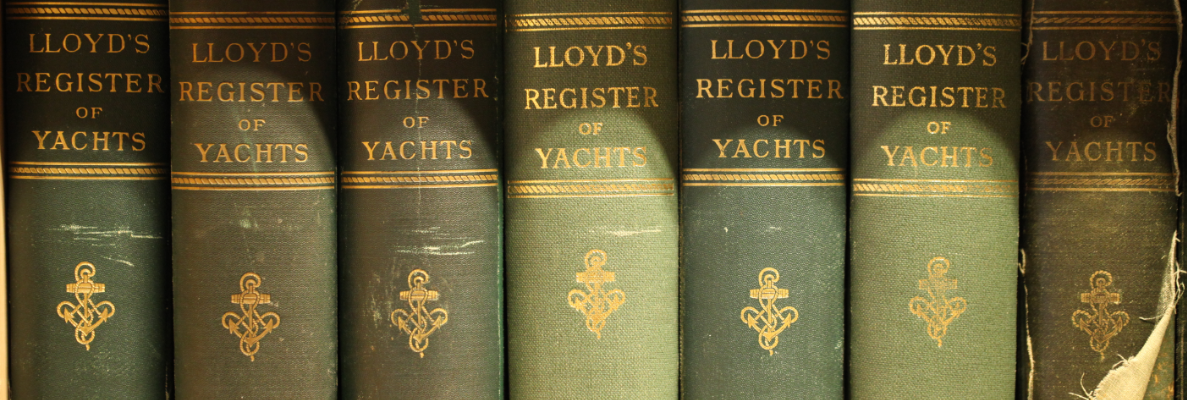It started with a cup of coffee,
"Safety" has been at the heart of Lloyd's Register's work since 1760. The 11 men met at Edward Lloyd's coffeehouse to talk about publishing a list of ships, gathering on defining the quality of the ships and creating a registry to protect the life and property that was carried on them. Since then, Lloyd's Register has worked to make the world a safer place by applying its expertise in the energy and transportation sectors.
The world's first classification society
The Society for the Registry of Shipping was set up in 1760 by customers of Edward Lloyd's Coffee House on Lombard Street in London. The aim was to provide traders and insurers with registered information about the quality of their ship. The Logbook consisted of lists of ships that were rated or classified after investigating the status of their ship and equipment. This was the real beginning of the classification and was the world's first classification society.
The classification was all about quality and continues to be. Simply put, it is an assessment against the defined standards of the status of a ship that is under construction or already exists. Since 1768, the association used A1 to showcase a top-class ship. A1 has been used since 1775 and is now a symbol of quality.
The association's disputes over the classification system from 1799 to 1833 led to the creation of a second register and brought both sides to the brink of bankruptcy. In 1834 Lloyd's Register of British and Foreign Shipping happily shook hands by forming a philanthropy committee.
In the 19th century, iron and steel, which replaced steam, sail and timber, created unprecedented ships and brought major changes. The practical experience based on the Lloyd’s Register faced difficulties.
International
The organization quickly gained widespread respect, provided evidence to government committees, and received requests to appoint a surveyor from abroad. The first surveyor employed outside the UK was commissioned in Newfoundland in 1812, and continued to employ surveyors from 1830 onwards. More appointments were made in the European continent in the 1860s, including Antwerp and Rotterdam.
In the early 1880s, almost half of the world's shipping was classified by Lloyd’s Register. In 1914, increasingly international appearance, it was deemed appropriate to change the organization's name to Lloyd’s Shipping Register. Starting in 1916, the organization started to set up many national and regional committees to better understand local conditions.

Diversification
Inspection of materials and fabrication was an integral part of the classification process, and in the early 1800s surveyors practiced their skills on land. For many years, these terrestrial inspections were concerned with the robustness and safety of ships and their structures, from testing anchors and cables to the quality of iron and steel. As the ships became more sophisticated, opportunities arose for the organization to expand its control role to other offshore areas, and in 1911 began in cold storage for the Port of London.
Based on one of the world's leading manufacturing countries, the expertise and reputation of Lloyd's Register has become attractive to many overseas organizations seeking assurance on the quality of goods produced and shipped in the UK. The international network of the association led to invitations for inspections from foreign governments, businesses and organizations. By 1934, researchers were inspecting ten million cubic meters of cold stores not only in the UK, but also in Congo, Antwerp and Basle, Leopoldville and Matadi and Singapore.
Lloyd's Register has maintained its place as the leading classification society throughout the war years. He also sowed seeds of a significant part of the organization's work in the transport and energy sectors. Customers with business areas other than shipping started using Lloyd's Register in new registrations, especially in the oil industry. All these activities expanded significantly after 1945 and eventually led to the creation of a separate section for offshore work.

Technological Innovation
During the Second World War, demands for war increased the pace of change in shipping and industry, and Lloyd’s Register helped control many innovations. Restructuring efforts after the war allowed Lloyd's Register to gradually revive its overseas activities. In the mid-1950s, the shipping and shipbuilding shifted eastward, causing a long boom in shipping. Lloyd’s Register has seen significant growth in offshore operations. The organization provided consultancy and inspection services to nuclear power plants in 1956, including Britain's Calder Hall, the first nuclear power station to produce electricity on an industrial scale.
After the 1960s, Lloyd's Register made the exchange easier while the shipment boom continued. The ships grew even bigger, and containerization revolutionized the cargo flow, changing the world. The oil crisis of the early 1970s led to a deep depression in maritime transport, but Lloyd's Register continued to grow with its involvement in offshore jobs for oil and gas extraction under the North Sea.
There was another difficult period since maritime transport had hardly grown in tonnage until 1990. However, Lloyd's Register has strengthened its position in Asia, diversified maritime operations around the world and reinforced its position as the leading classification society for cruise ships and liquefied natural gas (LNG) vessels.
A consulting-based railway business was first handled in the early 1990s and Lloyd's Register Rail was established in 1996. Governments around the world have invested heavily in major railway projects from the Netherlands to Dubai and Taiwan. In 2015, LR sold its rail works to Ricardo PLC.
On July 2, 2012, he transformed Lloyd's Register status from an industry and prudent society to a company limited to a share named Lloyd's Register Group Limited. The shares of Lloyd's Register Group Limited are owned by the charity organization Lloyd's Register Foundation.
In 2013, the Llyod's Register logo changed, inspired by the LR stamp, the logo was inspired by the LR seal stamped on the steel used by the surveyors since 1884. Lloyd's Register continues to grow and serve customer needs, maintaining its competitive edge in a rapidly changing world.

